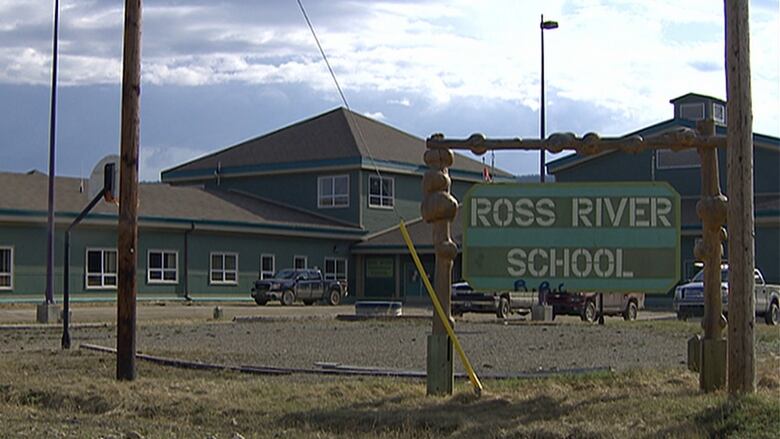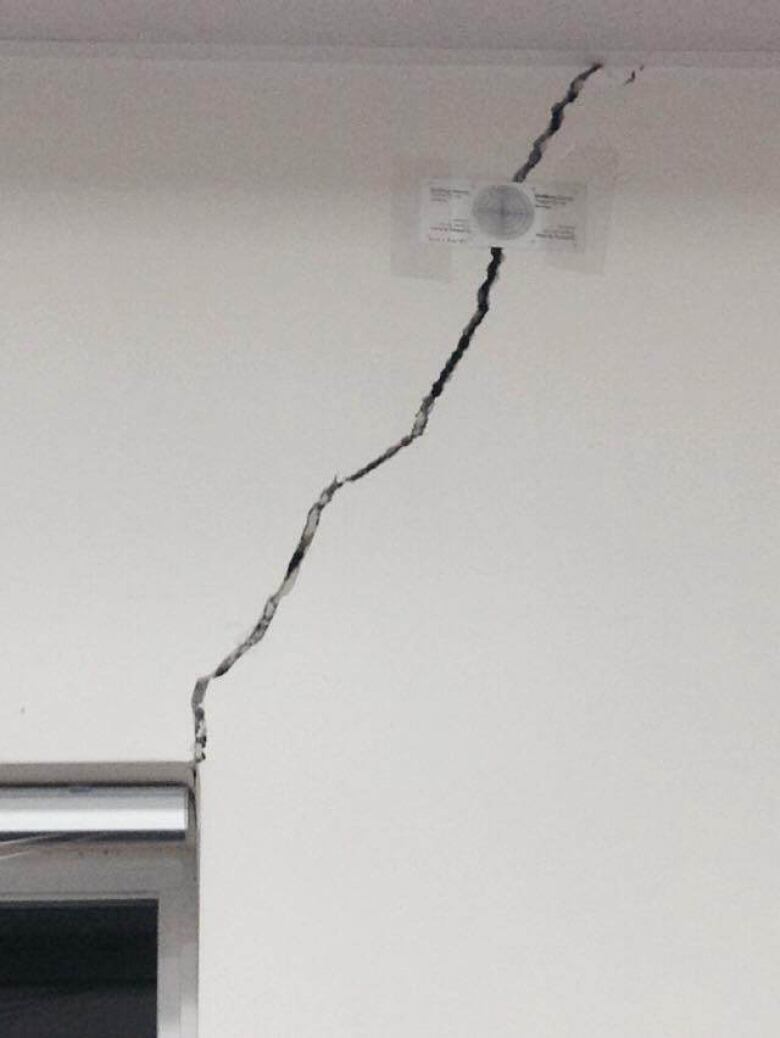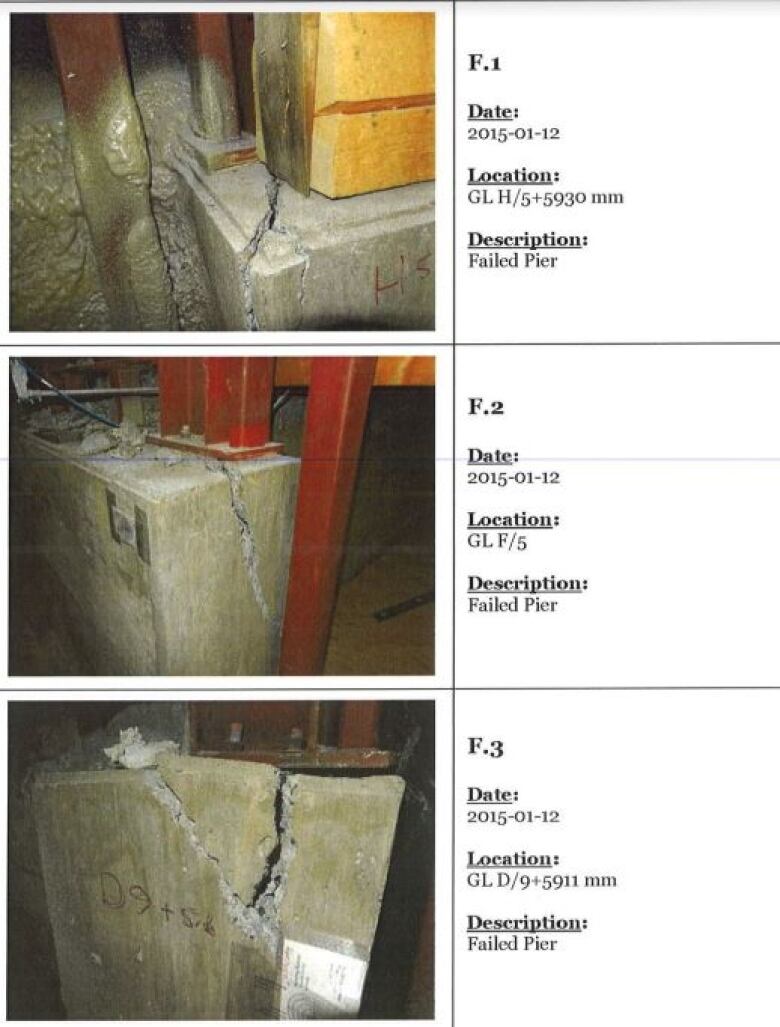Ross River school in need of major repairs, again
School sinking, shifting as thawing permafrost turns to mud and can't bear any weight

Structural engineers "strongly recommend" the school in Ross River, Yukon, undergo extensive repairs "very soon" just two years after the building had amajor overhaul.
The school was closed in 2015 for five months and underwent re-levelling after engineers warned it was in "critical condition" and in danger of collapsing.
Last week, the school was closed again for inspection, after the area was rattled by earthquakes.

Thelatest advice to do additional workcomes on the heels of several reports that have studied the structural problems with the school and found them still a concern.
Thebuilding has been plagued by problems since it opened in 2001. People in the community began notice cracks and shifting in walls, doors and windows when the school was just a year old.
Williams Engineering inspected the school onMarch8 of this year andnoted that the building was continuing to shift, with obvious "indicators"such as drywall and windows cracking, doors jamming and gaps in ceiling tiles.
"There appears that there were more indicators observed than on previous visits," the report says.
It also says that as the building continues to move, "more indicators of structural distress present themselves."
The report concludes by "strongly" recommendingthat "steps be put in place to have the building re-levelled in the near future."
Engineers warned gov't in 2015
The concerns are focused on the building's foundation, and the permafrost underneath.
Three different engineering reports from early 2015 warn that while repairs were essential at that time, any repairs without addressing the failing permafrost ground underneath would only be a temporary fix.
A report by Stantec Engineering dated Feb.5, 2015, noted, "at this time, Stantec considers the building's structure to be in critical condition."

It went on to advise the government that "the unknowns surrounding the foundation and the subsequent superstructure problems are significant and should not be ignored."
Williams Engineering's report from Mar.20, 2015 echoed theconcern, saying "in its current condition, a significant wind, snow or seismic event could cause failure of structural systems in the building."
It recommended that a geo-technical engineer establish the stability of the building's foundation, or else "any repairs carried out should be considered as a temporary solution only."
Documents discussing the tender from the department of public works, dated May 6, 2015,acknowledgethat the "soil underneath the building has not yet stabilised", andthat repair work would "make the school secure with future work to be completed as conditions change."
Another public works document explained that the government was committed to having a "safe functioning school for the '15/16 calendar year."
Thermosyphons work to keep ground cold
The community of Ross River sits on a flood plain of sand and silt, with some layers of gravel. It's an area of what's known as "discontinuous permafrost",that's always at roughly 2 C.
The permafrost consists of large "lenses"of ice, which are disc-shaped chunks, varying in size but typically fourto eightmetres in dimension. The ice hasbeen in place for some 10,000 years.
Engineers have designed a method of keeping that ground frozen, so that it is stable enoughto sustain large loads, such as a school thermosyphons.
Thermosyphons are a series of horizontal pipes laid within the ground, filled with carbon dixoide. When the ground is warmer than the air, they extract the warmth from the ground, and expel it via a radiator pipe to outside.
Dr. Jim Oswell isan expert in thermosyphons and permafrost degradation in the North, and sat on Canadian Standards Association's task forces that produced standards on both topics.
Oswell says typically, thermosyphons are used when buildings are built "slab on grade", that is, concrete poured onto the ground, with no crawl space.
He says the thermosyphons are laid in first, topped with a layer of rigid insulation, then the concrete footing pads. The insulation acts to prevent warmth from the building seeping into the ground, and the thermosyphons work to keep the ground cold.
Oswell says thermosyphons can be used with a crawl space with insulation a key element.
"I don't think you would want the thermosyphons exposed to the air in a crawl space or without the benefit of some insulation overlying them," he said.
"The idea is that you'd always want to have some insulation that would inhibit the heat transfer from the building, even if it's through a crawl space, into the subgrade. So you'd want some rigid insulation in place and the thermosyphons underneath that."
'Permafrost turns to mud'
In the Ross River school, though, the thermosyphons are not located in the subgrade underneath the concrete footing pads. They are instead located above the concrete pads, on the same level as the concrete columns that support the steel beams.

A report by Associated Engineering in January 2015 notes that "the thermosyphons [are] set within the building and foundations extending down past it."
"Presumably the internal foundations were also taken below the thermosyphons... since the concrete pedestals extend below the thermosyphons and since they were not insulated they will be a heat source for the [concrete] bases below ground," the report says.
Engineering reports also indicate that rigid insulation was added above the thermospyhons in 2013, some 12 years after the schoolwas built.
The reports all note that the crawl space has been consistently warm, between 16C and 18C.
The engineers pinpoint that the heat from the crawl space travelled down into the ground underneath the building, leading to permafrost thaw, and destablizing the structure.
The report from Associated Engineeringsays thatbecause the permafrost did thaw, its ability to hold weight greatly decreased.
"Melting of ... lenses of ice in the silt described in the site investigation report ... are going to result in variable and net settlement of the building as that portion of permafrost turns to mud with zero allowable bearing capacity," the report says.
'Not good news for the school'
Meanwhile, recent examinations of the building show that earlier warnings have come to pass.
A report by Williams Engineering fromApr. 20, 2017informs the government that despite the 2015 repairs, the building has continued to shift.
It says in fact "it appears there are more indicators observed than on previous visits," adding that as the building continues to move, more distress will appear.
The cost of re-leveling the school in 2015 came in at around $2.4 million.
A geotechnical report, also from March 2017, says 2015 data show a "warming trend in both summer and winter temperatures. This is not good news for the school."
"It appears that settlement will continue as the permafrost continues to warm, due to a combination of ... design and operational concerns," the report says.
It suggests the government consider installing a bank of refrigeration units onto the thermosyphon radiators, connected to the piping under the school, as well as other temperature monitoring equipmentat an estimated cost of about $550,000.
Meanwhile, Yukon Public Works Minister Richard Mosytn has admitted that the thermosyphon system may not be working as it should be.
"We are not entirely convinced these measures are working as expected," Mostyn said.
Mostyn said he's instructed his officials to "step up" the inspections of the school.












_(720p).jpg)


 OFFICIAL HD MUSIC VIDEO.jpg)
.jpg)



























































































